I just love hazelnuts. The buttery crunch of the toasted nuts is so delicious that I decided I better start growing and harvesting my own.
Lucky for me, growing them is easy. You can learn all about it in our guide to growing hazelnuts.
And harvesting is even easier! Whether you grow your own shrubs or trees, or find them in the wild, it is absolutely worth knowing how to harvest them yourself.

We link to vendors to help you find relevant products. If you buy from one of our links, we may earn a commission.
Read on to learn about how to harvest and preserve hazelnuts, with some bonus recipe ideas.
What You’ll Learn
Understanding the Growing Cycle
Hazelnuts are unique in that they develop buds in the fall, which open into flowers in the late winter or early spring.
The male flowers are long yellow catkins and the female flowers are very small, appearing like tiny red threads at the end of the twigs.
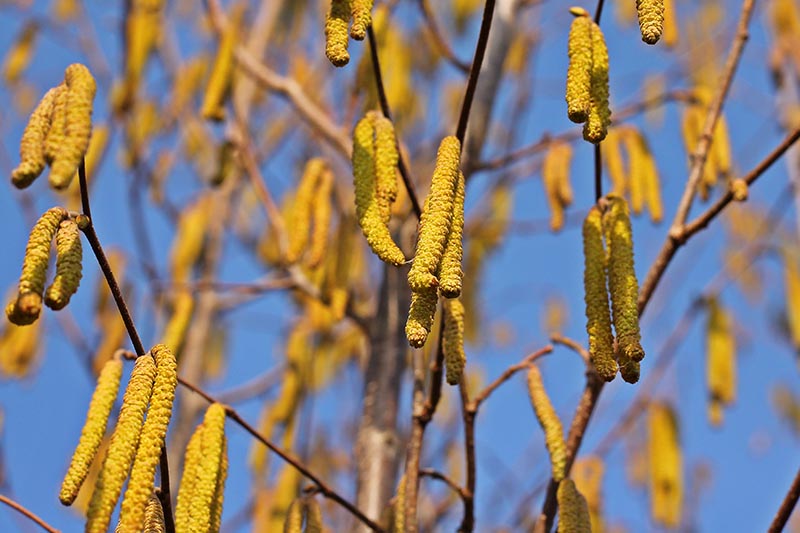
Though each shrub contains both male and female flowers, most varieties require cross pollination for nut production.
If you have the space, it is recommended to grow at least two different varieties.
They are wind pollinated, so be sure to space plants no more than about 50 feet from each other.
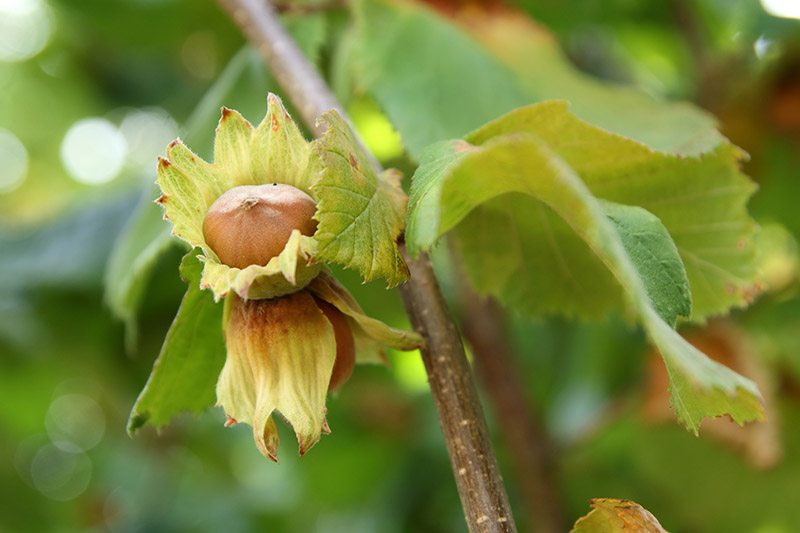
After pollination, the female flowers mature into edible nuts, which turn from green to brown as they mature.
These grow to roughly 1/2 inch in size. They are each encased in leaf-like bracts and appear in clusters of two to five.
When to Harvest
It takes about three to five years from planting until the trees are old enough to produce a harvest.
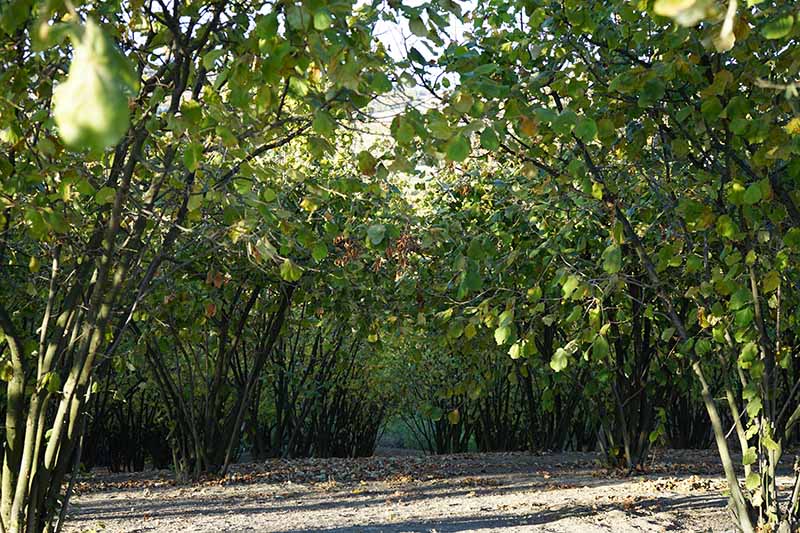
While that may seem like a while, other species can take much longer to produce. Pecans, for instance, begin producing at six to 10 years, and almonds can take up to 12 years to get a decent harvest.
Expect your first crop to be small. After a couple of seasons, the bounty will grow! A mature tree can produce 25 pounds of nuts in one season, and will continue to produce for about 50 years.
Nuts mature in late summer through early fall, depending on your climate. Once they turn brown and begin to drop from the tree, it is time to pick them.
How to Harvest
Harvesting takes very little effort. Since the nuts drop from the tree as they ripen, all you have to do is collect them from the ground below.
I recommend placing tarps under the trees to collect them once they fall, or simply rake them into a pile.
Foraging for Wild Nuts
If you don’t have the time or space to grow your own, keep an eye on forest edges and stream banks for wild hazel shrubs.

When collecting from trees growing in the wild, you want to pick them right off the tree when they are just beginning to turn brown, and let them finish ripening at home.
If you wait for them to fully ripen and drop, they will most likely be eaten by wild animals before you can get your hands on them.
To pick the nuts off of the shrub, simply twist the clusters.
Remember to always harvest sustainably, leaving the majority on each shrub intact for wildlife.
Preserving
After collecting, the nuts must be dried for storage.
It is easiest to wait until the clusters are dry to remove the nuts from the bracts.

Spread them out in a single layer on trays or screens in a warm, dry place out of the sun.
Turn them every few days until the outer bracts are easy to remove. This should take about two to four weeks.
They can then be shelled, or stored in the shells.
To speed the drying process to just one or two days, you can dry them in a dehydrator set to 90-105°F.
In the shell, they can be stored at room temperature for several months.
Shelled, eat them within a few weeks, or store them in the refrigerator for up to a year. To increase their shelf life, wait to process them until just before use.
Recipes and Cooking Ideas
Hazelnuts have a delightfully sweet, buttery crunch that is hard to mimic.

They make wonderful additions to soups, salads, and pasta dishes, or they may be baked into cakes and cookies.
And don’t forget the homemade candy!
Of course, you can always just roast them over an open fire or in your oven, and then snack away.
Adding hazelnuts is a wonderful way to fancy up any salad.
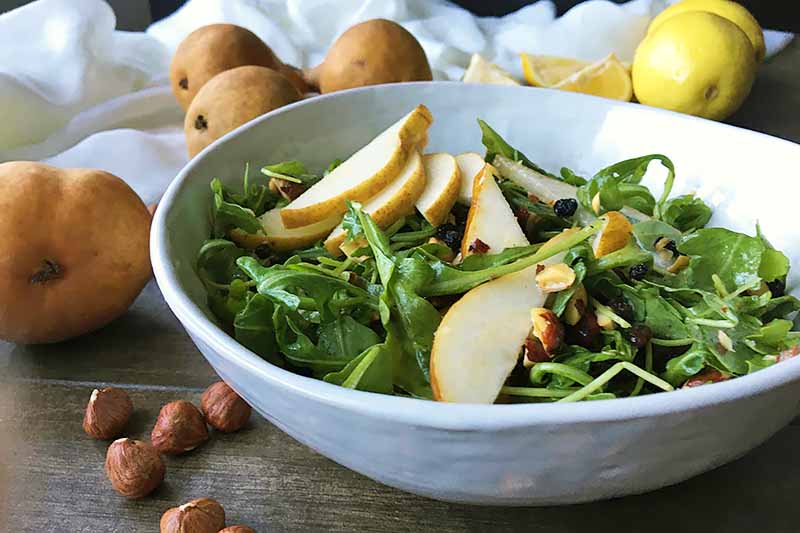
Serve up this simple salad with arugula, bosc pears, dried currants, and toasted hazelnuts at your next dinner party, or enjoy it on its own for a refreshing lunch.
Check out the recipe on our sister site, Foodal.
There is nothing quite like the pairing of hazelnut and chocolate.
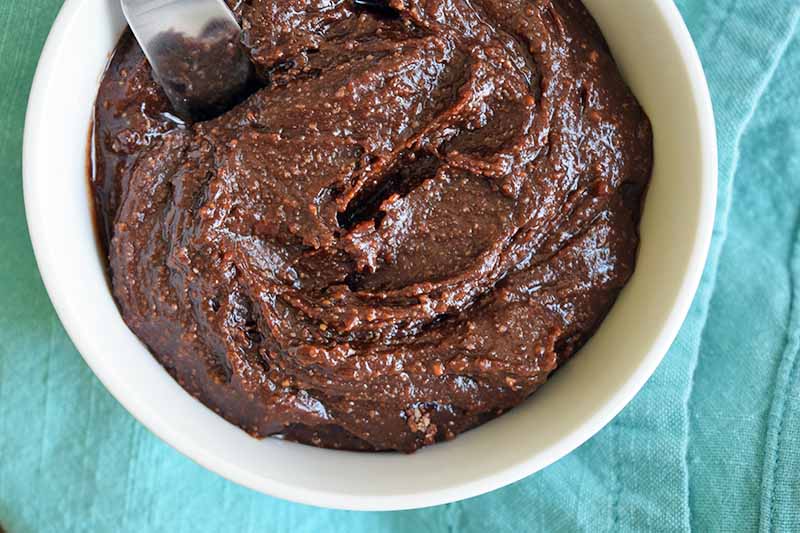
If you are looking for something heavenly to do with hazelnuts, try out this recipe for homemade Nutella on Foodal.
What better way to spend an afternoon than by filling your house with the smell of roasting hazelnuts and melting chocolate?
Smear this incredible spread on toast or graham crackers, or enjoy it as a dip with strawberries.
If, like me, you can’t turn down a bowl of pasta with rich, nutty pesto, try this vegan hazelnut pesto – it’s delicious on tortellini.
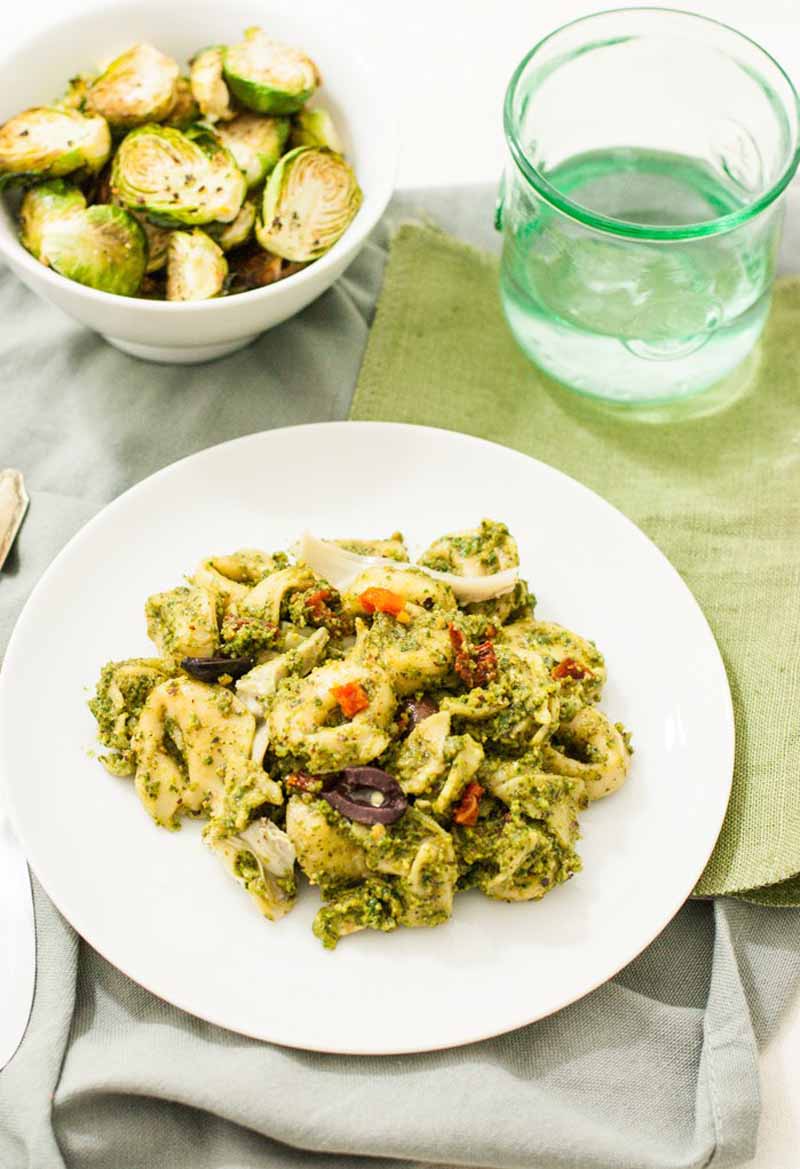
With a crunchier texture and more earthy flavor than traditional pine nut pesto, this recipe will make pasta night all the more interesting. Check it out on Foodal.
You Won’t Want to Leave the Kitchen
Whether you grow your own tree or befriend a hazel shrub in the woods behind your house, harvesting your own hazelnuts is sure to be so satisfying.
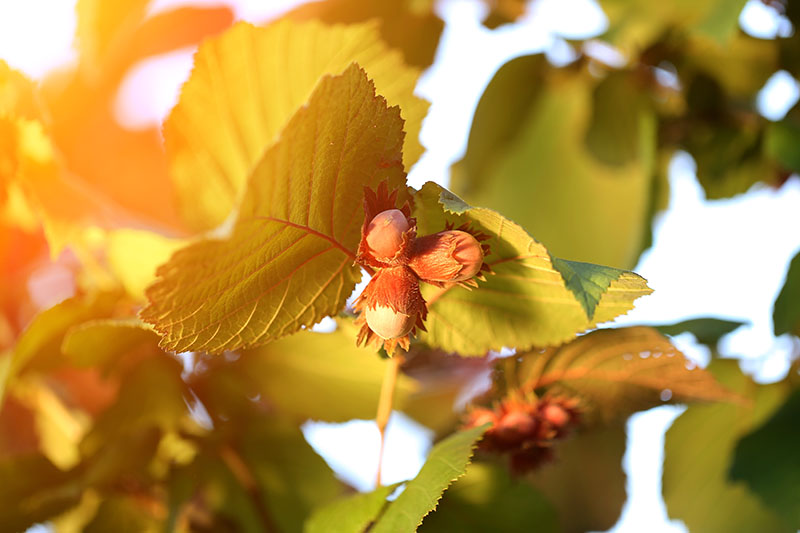
Not only are they easy to harvest, but you won’t ever regret filling your kitchen with the aroma of toasting hazelnuts.
Have you harvested your own crop? Share your stories in the comments below!
If you enjoyed reading this article, visit these guides to growing your own nut trees next:
- How to Plant, Grow, and Care for Almond Trees
- How to Grow and Care for a Macadamia Nut Tree
- How to Grow and Care for Pecan Trees
© Ask the Experts, LLC. ALL RIGHTS RESERVED. See our TOS for more details. Uncredited photos: Shutterstock.

There is an abandoned orchard nearby with an entire hillside grove of hazelnuts – they haven’t been pruned in decades and I’m not sure I can compete with the squirrels but your article has inspired me to go check it out and see if I can bring back a pound or two. Thanks!